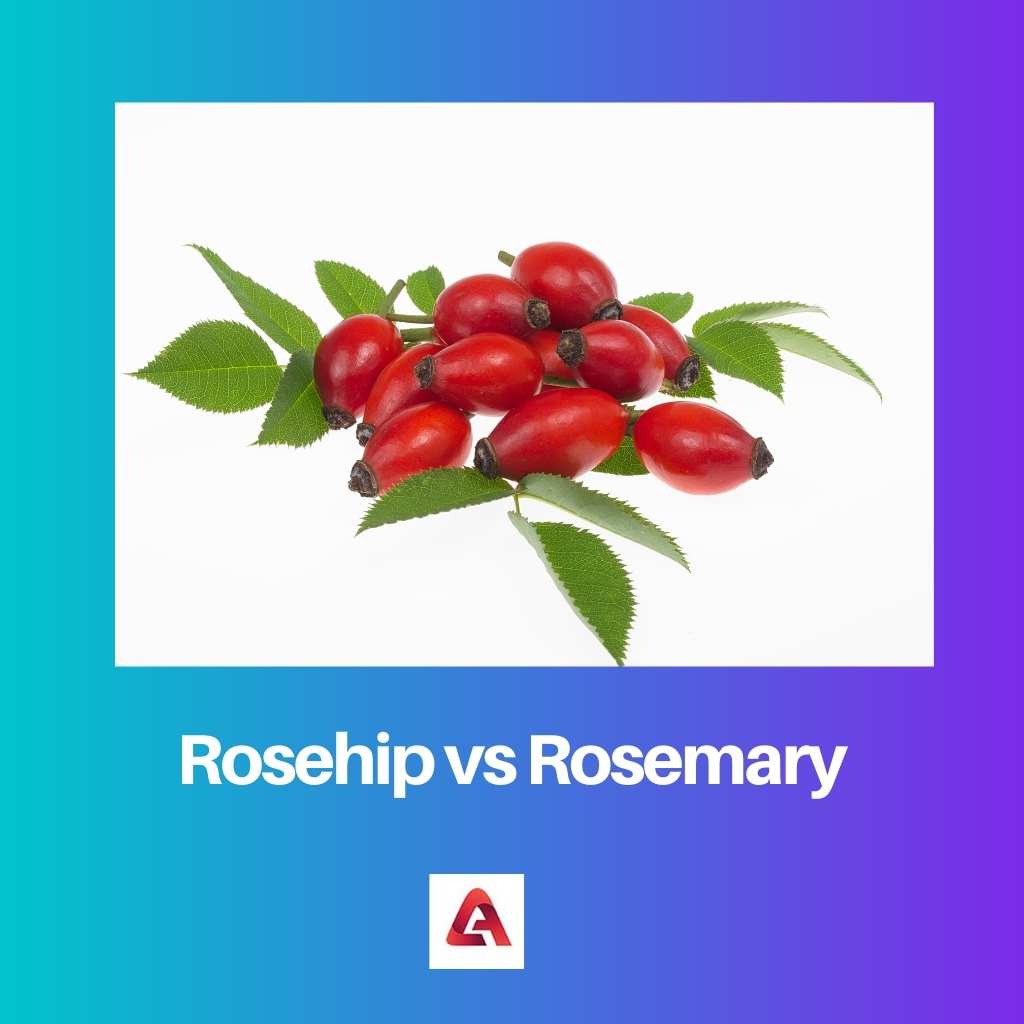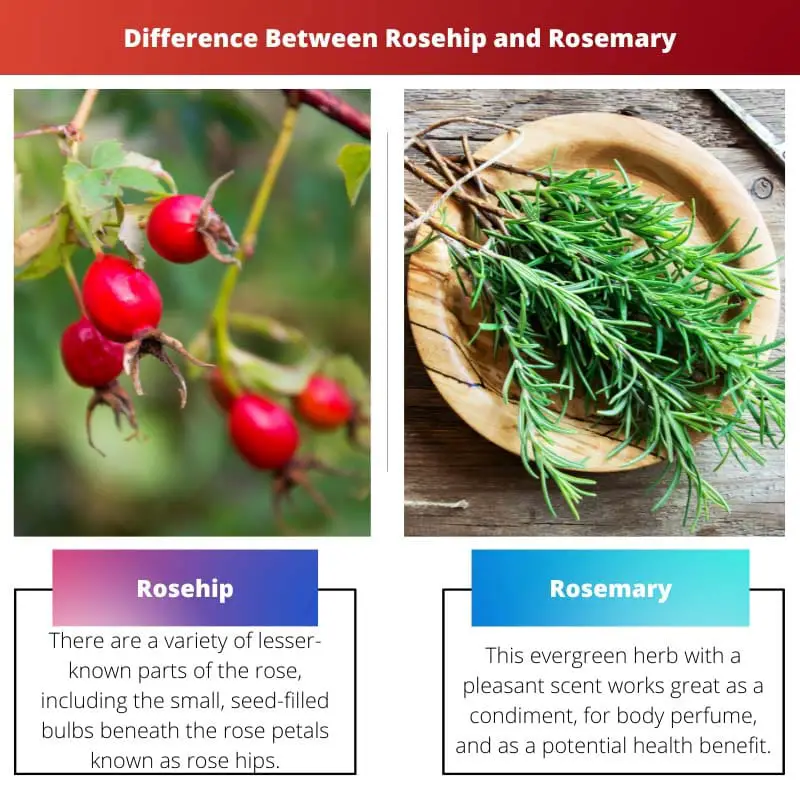If you are reading this then you are probably dealing with some sort of hair-related problems. Chances of me being wrong here could be less, but never zero.
Never mind, rosehip and rosemary have a lot of hair health benefits and one gets confused between them and thinks that they are interchangeable.
Even though they are very similar but pertains to a whole lot of different meaning.
Key Takeaways
- Rosehip and Rosemary are two different herbs with distinct properties.
- Rosehip is the fruit of the rose plant and is used in skincare products due to its high vitamin C content, while Rosemary is an herb used for cooking and aromatherapy.
- Rosehip is used to improve skin texture and reduce inflammation, while Rosemary is known for improving memory and concentration.
Rosehip vs Rosemary
The difference between rosehip and rosemary is that a rosehip is just the fruit of the plant rose. Located below its petals, which contain the seeds of the plant. On the other hand, rosemary is a herb that originated in Europe and Asia that produces an aromatic herb used in cooking and perfumes.

Although rosehips are considered a reliable source of vitamin C, they are destroyed in the process of processing and drying.
Rose hips contain a variety of natural chemicals, along with vitamin C, that should be beneficial for several health conditions, especially hair-related problems.
Originally from the Mediterranean region, Rosemary is a popular herb.
Aside from being used in food and medicine, the leaf can also be used to make medicine.
The medicinal use of rosemary includes memory improvement, indigestion relief, fatigue relief, hair growth, and many other uses, but there is no good scientific evidence to support most of these claims.
Comparison Table
| Parameters of comparison | Rosehip | Rosemary |
|---|---|---|
| Origin | The southern Andes | Mediterranean region |
| Appearance | Red fruit like cherry | Green elliptical herb |
| Scientific name | Rosa canina | Rosmarinus officinalis |
| Applications | Used in oils and medicines | Used in oils and food |
| Benefits | Reduces symptoms of knee and hip osteoarthritis | Enhances memory, reduces indigestion and hair loss |
What is Rosehip?
There are a variety of lesser-known parts of the rose, including the small, seed-filled bulbs beneath the rose petals known as rose hips. Rosehips are also referred to as the fruit of the plant rose.
The rose hips referred to as the fruit of the rose, are orange and yellow, though black varieties are also available.
The rosehip grows after the petals have bloomed and fallen off, which is in early to mid-fall, rather than at the time of the rose blossom, which blooms in spring and summer.
They’re considered sweeter when picked after the first snowfall of the season.
Rosehips don’t grow on every kind of rose. Often referred to as the wild rose, Rosa canina is native to certain regions in Europe, Africa, and Asia.
The fruit of the rosehip is normally developed after the end of the bloom. Rosehip also has a variety of health benefits.
Anthocyanins and polyphenols found in rosehip extract help reduce inflammation of any muscle that has been paining a lot lately and prevent joint damage.
Vitamin C found in rosehip extract help inhibit the growth of cancer cells in a cancer patient. Other studies have found that it is capable of reducing the production of some bad enzymes involved in cartilage degradation.

What is Rosemary?
This evergreen herb with a pleasant scent works great as a condiment, for body perfume, and as a potential health benefit.
It can be used in many ways, especially for bread like Foccacia and hair oils. rosemary is a type of herb or shrub that belongs to members of the family Lamiaceae along with oregano and thyme.
Herbs such as rosemary enhance the taste of many different dishes, and they are also a good source of iron, calcium, and vitamin B.
Most commonly, dried herbs are either whole or powdered, while fresh or dried leaves are used in teas and liquid extracts.
Since ancient times, the herb has been lauded for its outstanding medicinal properties.
Traditional uses of rosemary include relieving muscle pain or soreness, improving or sharpening memory, boosting the immune system (mainly the heart), and promoting hair growth by enhancing the hair pores.
Among the ingredients found in rosemary is carnosic acid which can neutralize free radicals in the brain. In some experiments done on rats, rosemary has been associated with improved physical performance after strokes.
Research indicates that rosemary may protect the brain from damage and help in memory sharpening or recovery.

Main Differences Between Rosehip and Rosemary
- Rosehip is the fruit of a rose whereas rosemary is a herb that belongs to the mint family.
- Rosehip is mainly cherry-red whereas rosemary is green.
- Rosehip is round and elliptical whereas rosemary is pointed and small.
- Rosehip is fruit whereas rosemary is a shrub or herb.
- Rosehip grows in chilled winters whereas rosemary grows in the warm and humid climate.

Reference
- https://onlinelibrary.wiley.com/doi/abs/10.1002/jsfa.4695
- https://www.tandfonline.com/doi/abs/10.1080/10408398.2010.490883
